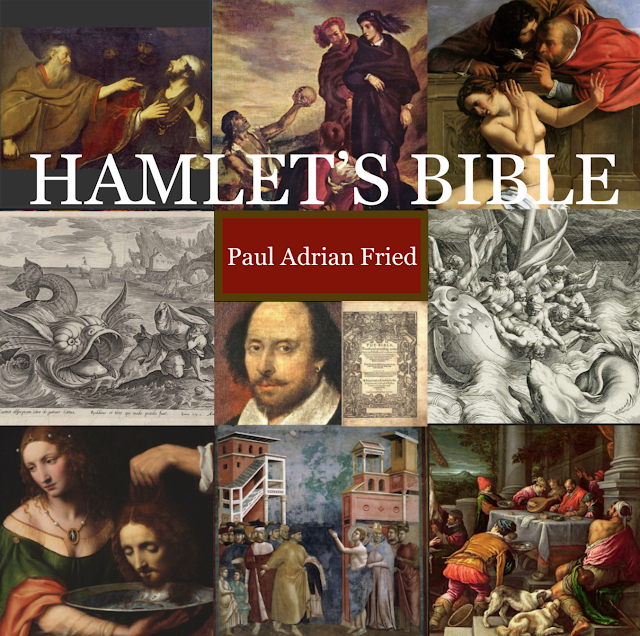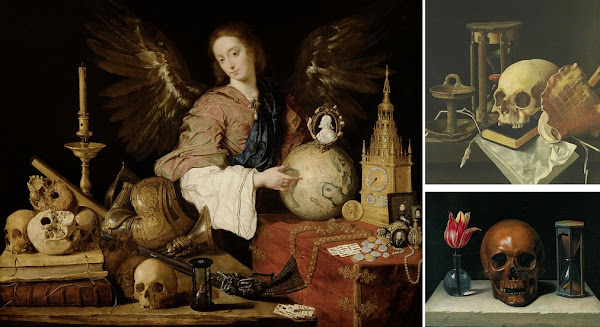Politics in Hamlet - via John Erskine Hankins, 1941
“. . . the purpose of playing . . . is . . .
to hold . . . the mirror up to nature;
to show . . . the very age
and body of the time
his form and pressure.”
(Hamlet, 3.2)1
Many people assume that Shakespeare is unconcerned with the topical, political, ephemeral details of his time, because they don't spot all the parallels that original audiences did. But in fact plays like Hamlet are full of them.
“Playing” doesn’t merely reveal so-called universal truths: John Erskine Hankins thinks Hamlet addresses historical-political events of Shakespeare's “very age” and “time”:
“Though the scene of Hamlet is medieval Denmark, most critics will agree that its characters and problems are those of sixteenth-century England. As is his usual custom, Shakespeare writes of his own day, regardless of where and when the action of his drama takes place. This is truer of Hamlet than has been generally supposed.”2
Elizabethan historical/political parallels in Hamlet, according to Hankins:
- An “incestuous” marriage of Claudius to a brother’s widow is like that of Henry VIII to Catherine of Aragon, and of Mary Queen of Scots to her cousin, Henry Stuart, Lord Darnley.3
- Reported sounds of ghostly warriors clashing in Edinburgh for three nights before Mary’s marriage to Darnley resemble the ghostly appearances in 1.1.4
- Gertrude’s marriage to her husband’s murderer is like the marriage of Mary Queen of Scots to James Hepburn, suspected murderer of her 2nd husband.5
- “Bloody” Mary I recognizing Elizabeth as successor at the end of her life, and Elizabeth finally recognizing James as successor, are like Hamlet giving his “dying voice” to Fortinbras for succession.6
- The Elizabethan “Bond of Association” (vowing to avenge Elizabeth's murder were she to be assassinated) is like Hamlet’s oath to his father.7
- Catholic claims of Elizabeth’s illegitimacy as monarch, and plots to kill her, are like Hamlet’s situation.8
- “Hamlet’s hesitancy to kill Claudius parallels Elizabeth’s hesitancy to execute Mary Stuart” for apparent involvement in assassination plans. Hamlet and Elizabeth seek more certain proof of guilt.9
- Elizabeth finds proof of her cousin Mary’s guilt through an intercepted letter, like Hamlet finding proof of Claudius’ murderous intentions by unsealing Claudius’ letter to England.10
- “Elizabeth’s policy of inaction in foreign affairs may also be glanced at in Hamlet’s criticism of Fortinbras for fighting great wars upon slight causes.”11
- Many in England believed “that their Queen was under the especial protection of God” by “miracles” that included “the tempest” that helped defeat the Spanish Armada. Late in the play, Hamlet believes he is protected by Providence.12
- Elizabeth expressed belief in the divine right of kings; Claudius: “divinity doth hedge a king” (4.5).13
- Elizabeth’s advisers micromanaged her wedding prospects, as Polonius and Laertes do Ophelia to discourage a relationship with Hamlet so that he is free to marry a foreign princess to secure a treaty.14
- Aspects of Fortinbras, and Laertes’ return from France in 4.5, resemble Essex.15
Hamlet: "The time is out of joint":
“To assume that the whole play of Hamlet is an elaborate historical allegory is a mistake, as the various elements of the plot cannot be made to coincide perfectly with any particular sequence of events. But in its use of problems and specific situations of contemporary politics, the play must have appeared to Elizabethans as a commentary on their age.”16
~~~
[John Erskine Hankins, 1905-1996
https://digitalcommons.library.umaine.edu/findingaids/427/ ]
NOTES:
[1] Too often readers and viewers assume that when Hamlet speaks of holding the mirror up to nature, he’s saying drama ("playing") will display very general universal truths regarding human nature, but in fact, if we understand Hankins, it would seem Hamlet is talking about controversial historical and political events of “the very age” or “the time.”
From the chapter, “Politics in Hamlet” (95-114),
in John Erskine Hankins’ book, The Character of Hamlet (1941).
[2] 95.
[3] 100-1. “...though Henry had been dead over fifty years when Hamlet was written, his first marriage was still a live political issue, since it involved Elizabeth’s right to occupy the English throne.”
[4] 103.
[5] 102-3.
[6] 97.
[7] 104.
[8] 103.
[9] 103-5.
[10] 105.
[11] 105.
[12] 106-7.
[13] 107-9.
[14] 111.
[15] 111-113
[16] 114.
~~~~~~~~~~~~~~~~~~~~~~~~
Disclaimer: If and when I quote or paraphrase bible passages or mention religion in many of my blog posts, I do not intend to promote any religion over another, nor am I attempting to promote religious belief in general; only to explore how the Bible and religion influenced Shakespeare, his plays, and his age.
~~~~~~~~~~~~~~~~~~~~~~~~
~~~~~~~~~~~~~~~~~~~~~~~~~~~~~~~~~~~~~~
Thanks for reading!
~~~~~~~~~~~~~~~~~~~~~~~~~~~~~~~~~~~~~~
My current project is a book tentatively titled Hamlet’s Bible, about biblical allusions and plot echoes in Hamlet.
Below is a link to a list of some of my top posts (“greatest hits”), including a description of my book project (last item on the list):
https://pauladrianfried.blogspot.com/2019/12/top-20-hamlet-bible-posts.html
I post every week, so please visit as often as you like and consider subscribing.




Comments
Post a Comment